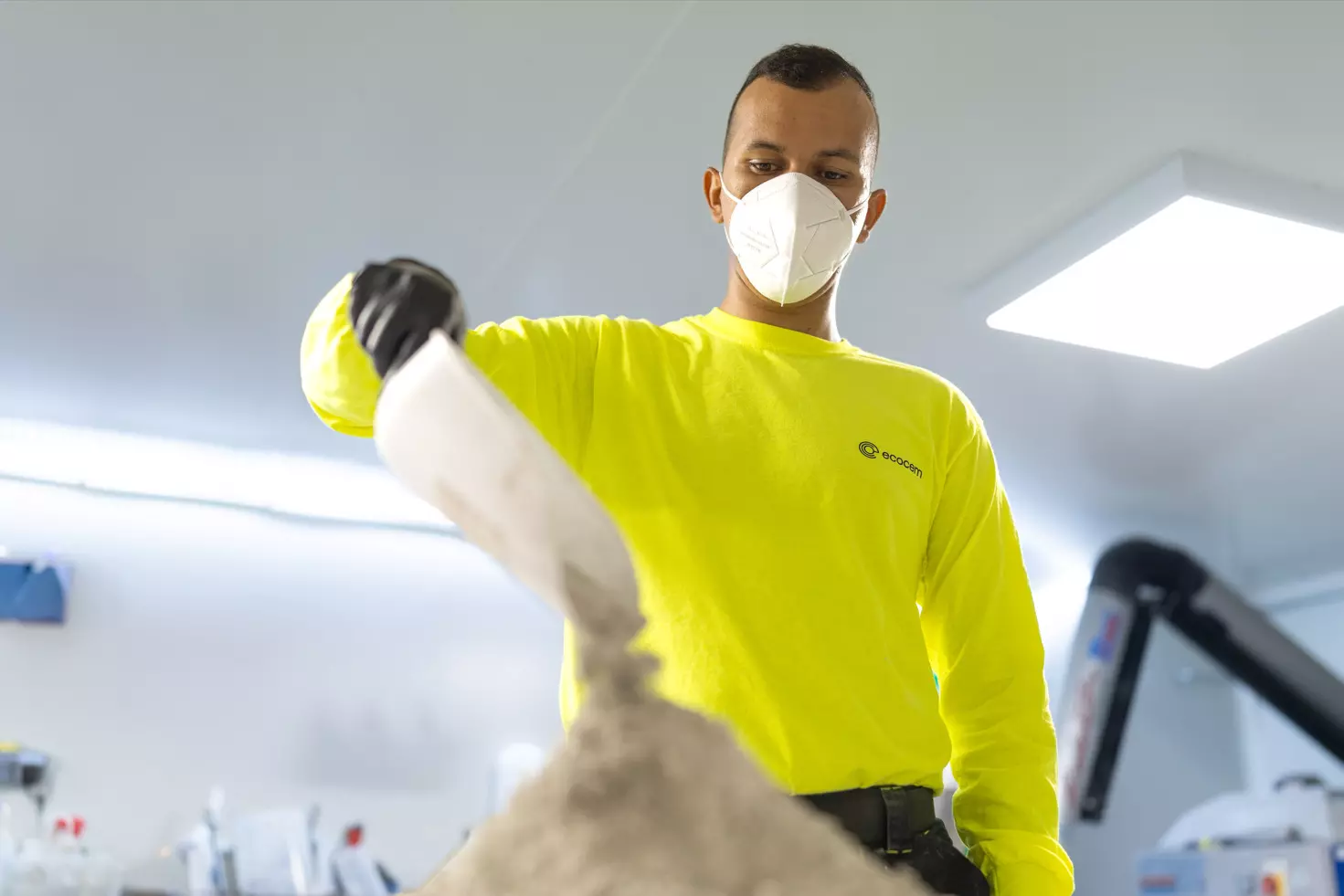
New Delhi, Nov. 8 -- Cement manufacturing is a large source of carbon dioxide emissions, contributing to 8 per cent of such emissions globally in 2024. Along with steel, fertilisers and plastics, it is a 'hard to abate' sector, because alternative climate-friendly processes to manufacture these products are either too costly or difficult to implement for technical reasons. Even so, companies like Calix and Ecocem have innovated and found ways to sequester the carbon dioxide emitted, just as was done in the case of Carbon Capture and Sequestration (CCS).
As we know, most of the carbon dioxide emissions in cement manufacturing are a result of the heating of the limestone and clay in a large container called the kiln. This limestone and clay mixture is heated to 1400degC, leading to the production of lime (CaO) and carbon dioxide, nitrogen and oxygen. The lime reacts with silica in the clay to form a substance called clinker. This clinker is then ground to a fine powder and again mixed with limestone and silica to form cement. It is clear that all steps of cement manufacturing lead to carbon dioxide emissions: the burning of limestone, burning of coal to heat the kiln and using fossil fuels for other steps such as packing the cement and transporting it to consumers. While it is technically possible to separate the carbon dioxide from the mixture of gases produced in the kiln and store it underground (as in CCS), it is too costly.
What Calix, an Australian cement manufacturing firm, did was to make a kiln that heats the limestone and clay and produces only carbon dioxide, which can be easily stored underground. Calix has patented this process and calls it Leilac (Low Emissions Intensity Lime and Cement Process). Leilac was supported by the EU's Horizon program in two phases (Leilac1 and Leilac2) to demonstrate how carbon dioxide can be easily separated and lead to a greener cement. Calix and Leilac's technology, which its website calls 'reimagining calcination', is simply to separate the heating process from the processing of limestone and clay. The heating is done, not by burning coal, but by a modular array of steel tubes, which indirectly provides heat for the calcination (heating of limestone and clay). This leads to the emissions of pure carbon dioxide, which is then captured and stored underground.
While Calix changed the kiln itself, Ecocem worked on reducing the proportion of clinker in the cement. Ecocem was founded in 2000 in Ireland and began by selling slag, which is a byproduct in the manufacture of steel. Rather than throw away the slag, Ecocem refined it and sold it as a cement mix to replace clinker. After experimenting for years and having secured support from Bill Gates' Breakthrough Energy Ventures (BEV), Ecocem came up with a cement which used only 20 per cent clinker (as compared to standard cement, which is composed of 70 per cent clinker), with the rest being slag and other filler materials. Ecocem claims to have delivered 22 million tonnes of low-carbon cement and prevented 18 million tonnes of carbon dioxide emissions. Ecocem's latest technology, ACT, claims to be scalable and aims to reduce the cement industry's carbon footprint by 2035. Ecocem has expanded across Europe with a presence in France, Belgium, the Netherlands, Luxembourg, the UK and the US. It has also partnered with academia and universities across the world, ranging from São Paolo, Toronto, to Toulouse, Paris and Delhi. Ecocem's cement is also being used in some high-profile projects in Europe, such as the HS2 high-speed rail in the UK, the new Metro of Paris: the Grand Paris Express, the Aviva stadium in Dublin and the convention center in Dublin. Ecocem's technology also got an endorsement from the UNEP. In a 2017 report titled "Eco-efficient Cements: Potential Economically Viable Solutions for a Low-CO2 Cement-based Materials Industry", the UNEP has suggested that low-clinker cement is a feasible way to decarbonise the cement industry.
Cement manufacturing accounts for 8 per cent of global carbon dioxide emissions and is a 'hard to abate' sector. With modifications to the kiln itself proposed by Calix and changes to the clinker-to-cement ratio pioneered by Ecocem, the cement industry has substantially reduced its carbon footprint. It is now important for the UNFCCC and developed countries to raise the finances needed by developing countries to switch to 'green cement' and for companies like Calix and Ecocem to transfer these technologies to other countries, particularly developing countries, in a mutually beneficial way.
Published by HT Digital Content Services with permission from Millennium Post.
